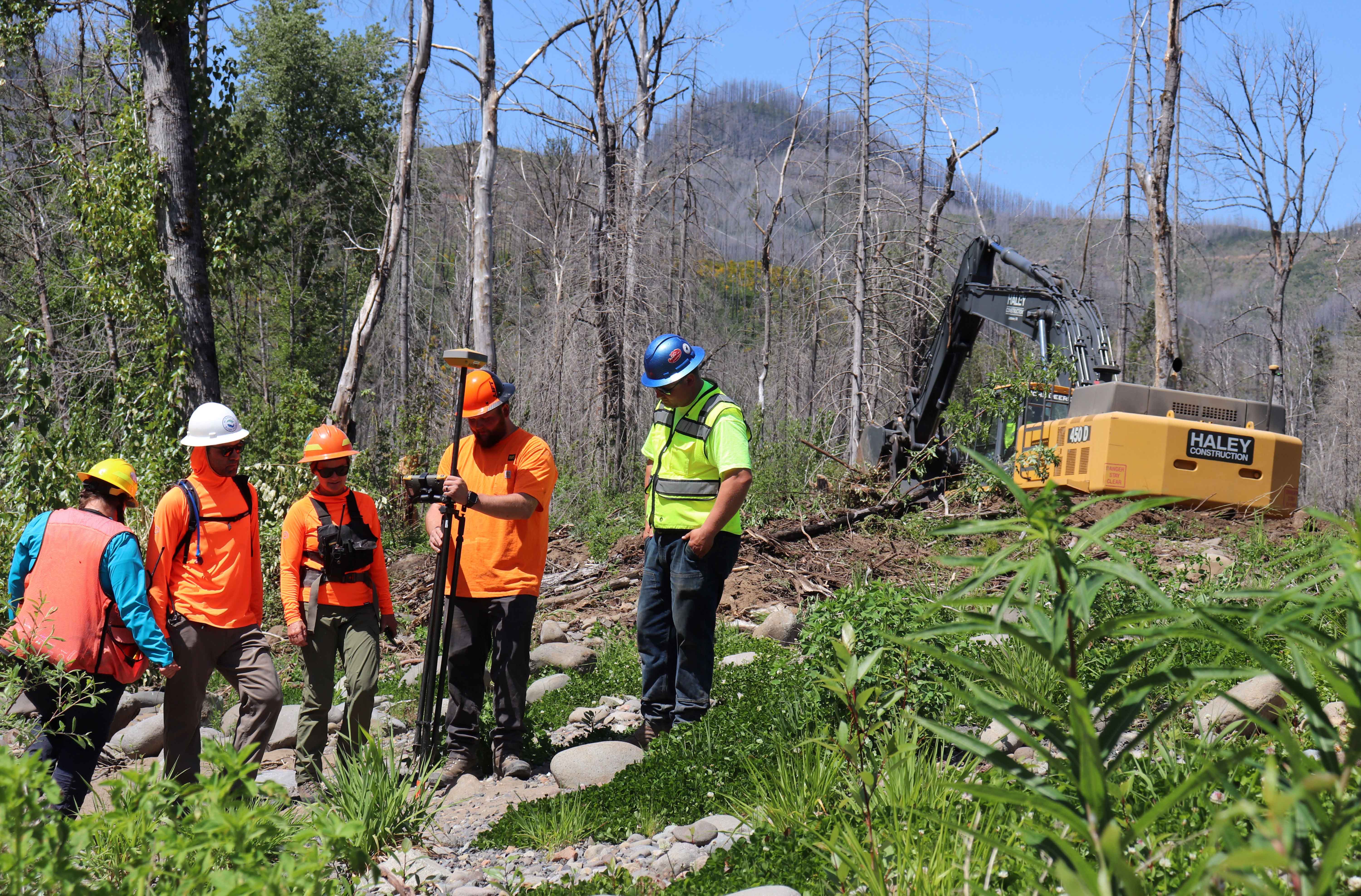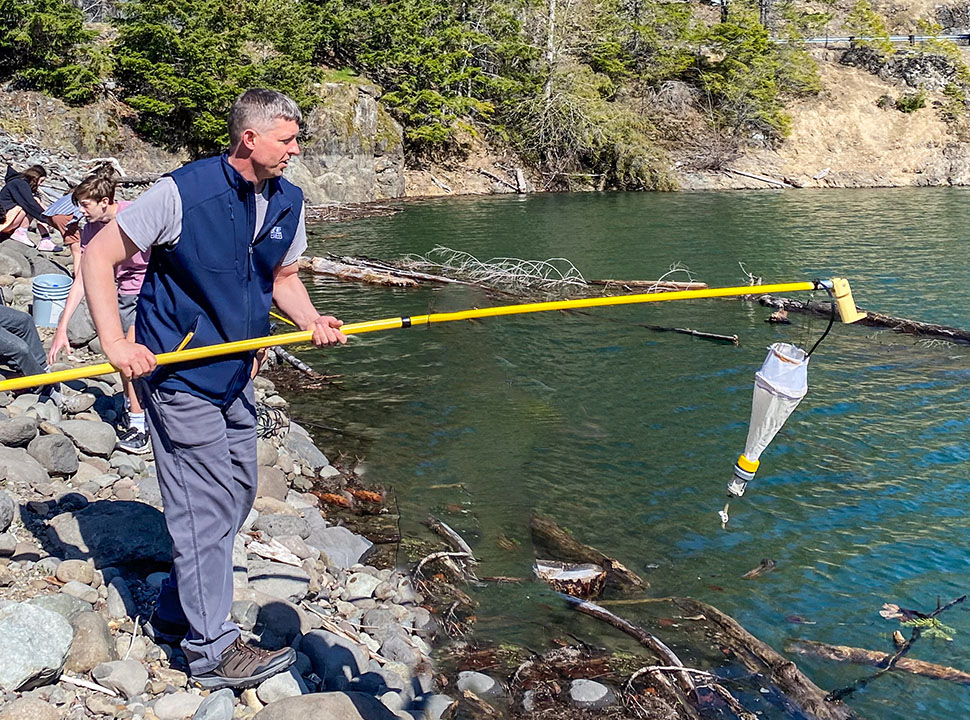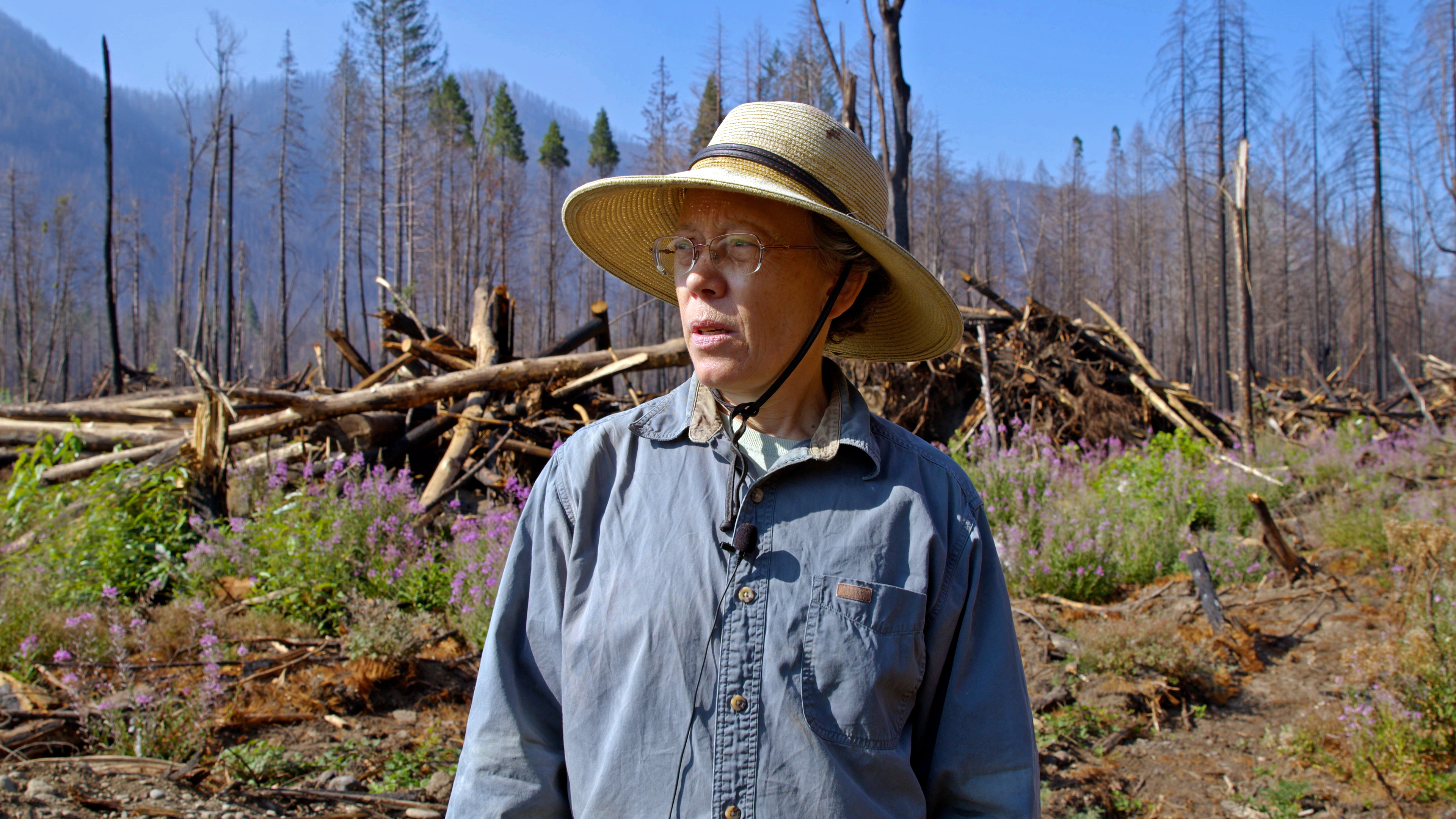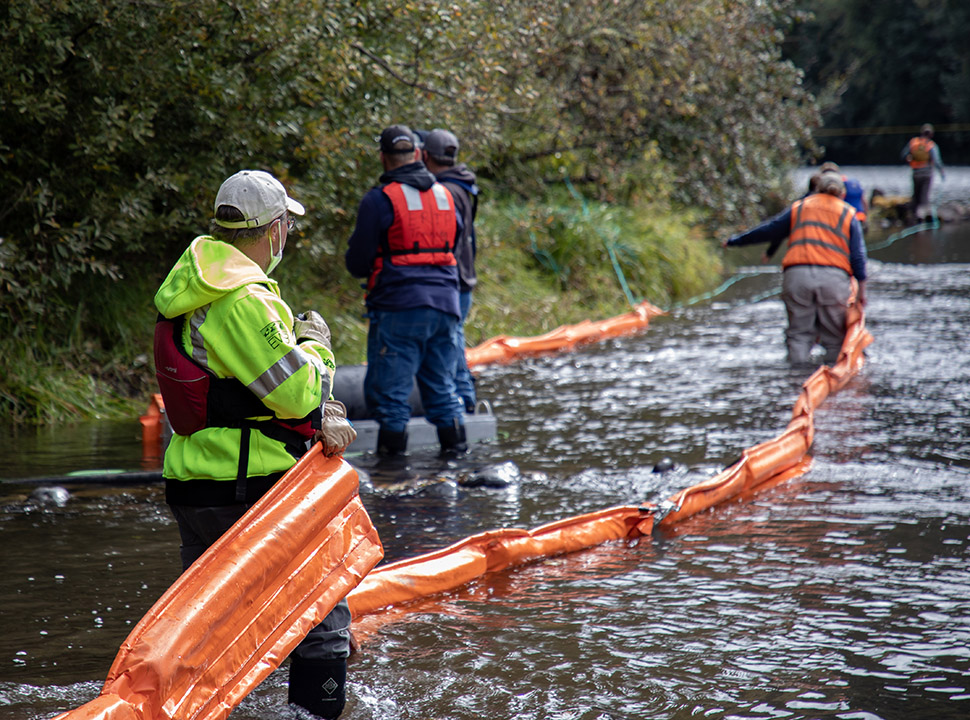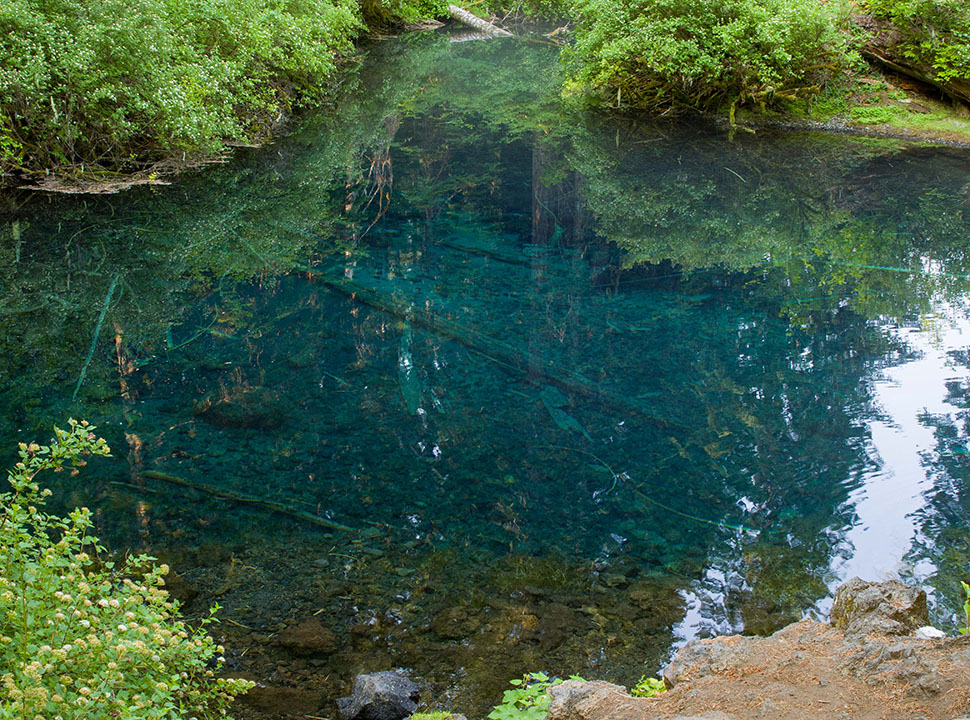Partners at EWEB, McKenzie River Trust, the McKenzie Watershed Council, and the U.S. Forest Service broke ground this month on a major floodplain restoration project in Quartz Creek, a significant tributary to the McKenzie River. The project adds to a series of similar nearby projects aimed at reshaping valley bottomlands back into healthy floodplain forests along the middle McKenzie River.
The project aims to promote historic connections between the river and its floodplain, increase habitat diversity, and provide slow-water areas to support fish and allow sediment to drop out of the flowing water. During the construction period, which will last through the summer months, people passing the area by car or boat can expect to see large equipment moving soil, rocks, and trees.
The plan is to excavate new channels to reconnect water to the floodplain forest habitat. As water spreads into those channels, it will become slower, creating new habitats and allowing more time for heavy sediments to sink into the creek bed.

This aerial image looking down at the Quartz Creek confluence with the McKenzie River, at top of photo, shows newly-cleared pathways indicating where excavation for floodplain connectivity will occur. Photo courtesy McKenzie River Trust
The team will also install large wood structures to support the new channels and further interrupt stream flow. These large wood structures also provide essential habitat for fish and wildlife, including beavers, lamprey, trout, and salmon, who have been unable to fully utilize Quartz Creek due to poor habitat conditions.
Lara Colley, a Restoration Projects Manager with the McKenzie Watershed Council, is hopeful that restoration activities will lead to a more resilient landscape for the McKenzie River community.
“This summer's project on Quartz Creek is a great example of how local, collaborative efforts can continue building resilience for McKenzie River communities," she said. "Similar projects upstream have shown us that these restored landscapes quickly become biological hotspots, where natural processes can create and maintain habitat for many native species, including fish, beaver, and birds. Supporting these native fish and wildlife populations also plays a vital role in the resilience of our local river recreation economy. Over the past decade, we’ve observed a number of other significant benefits, including buffering the effects of flooding by slowing water and capturing sediment and debris, storing groundwater to reduce drought during summer months, creating fire breaks in wetted areas, and providing refuge for wildlife during wildfires.”
To date, partners have restored more than 400 acres between Finn Rock and the headwaters of the McKenzie River. These projects have numerous community benefits, including protecting water quality and lowering the costs and amounts of chemicals needed to treat drinking water at EWEB’s Hayden Bridge Water Treatment Plant.
According to Susan Fricke, EWEB’s Water Resources and Quality Assurance Supervisor, “Quartz Creek was heavily burned in the Holiday Farm Fire, and we expect to see some upslope erosion sending contaminants down into the creek. This project will help restore natural processes that help maintain water quality and buffer against some of the negative effects of the fire and the century of degradation from the creek being contained by roads and bridges.”
Eli Tome, Director of Conservation for McKenzie River Trust, a local nonprofit that owns land at the confluence of Quartz Creek and the McKenzie River, shared, “McKenzie River Trust is excited to partner with other local organizations and experts to help care for Quartz Creek. Multi-benefit projects like this one are smart investments in the health of our communities and our environment. This work safeguards the McKenzie River’s water quality, promotes important wildlife habitat for sensitive species, and buffers upriver communities against changing environmental threats, like floods and fires.”
Restoration-related project activities on Quartz Creek will continue through the summer, but neighbors and visitors to the McKenzie River can expect minimal impacts to travel and recreation. Once the work is complete, partners will conduct regular environmental monitoring to see how the area responds to the restoration efforts. People interested in learning more about restoration work on the McKenzie River are encouraged to visit www.mckenzieriver.org/mckenzie-river-restoration/.
This project is made possible by committed community partners and funders, including EWEB, Haley Construction Company, Inc., the McKenzie Watershed Council, the National Oceanic and Atmospheric Administration (NOAA), the Oregon Department of Fish and Wildlife, the Oregon Watershed Enhancement Board, the U.S. Forest Service, and Wolf Water Resources.

